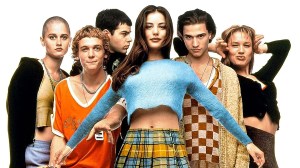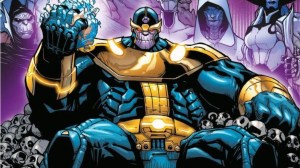The acquisition of Lucasfilm by The Walt Disney Company in 2012 sent a shockwave through the Star Wars fandom. The immediate fallout was the painful, yet necessary, de-canonization of decades of beloved Expanded Universe material. As the dust settled and a new era of storytelling dawned, the weight of upholding the franchise’s legacy fell upon the creators of the first projects of the new canon. One of the first among these was the 2014 animated series Star Wars Rebels. Alongside Dave Filoni, a key figure in the show’s creative team was writer Henry Gilroy, a veteran of another hit animated series, Star Wars: The Clone Wars, who understood the gravity of the task at hand. In the most recent episode of the Star Wars Rebels podcast, Pod of Rebellion, Gilroy joined the cast as a guest, where he recounted the powerful, definitive stand that set the standard for the entire series and reassured a fanbase that did not know what to expect from the Disney era of Star Wars: “My job is not to protect the Disney brand. It’s to protect the Star Wars brand.”
Videos by ComicBook.com
This bold statement, made with the full force of a corporate giant now calling the shots, was a promise the writer and his collaborators stood by, allowing Rebels to become a cornerstone of the new official history.
The Writers Successfully Wove New Characters and Plots Into Established Lore
Henry Gilroy’s commitment to protecting the Star Wars brand meant a staunch dedication to continuity, particularly in a series designed to fill the crucial gap between the prequel trilogy’s final moments and the original trilogy’s beginning. Star Wars Rebels had the complex task of not only introducing a new band of heroes—the crew of the Ghost—but also laying the foundational groundwork for the establishment of the larger Rebel Alliance and seamlessly bringing iconic characters back into the fold. This was a creative minefield where one wrong move could upend the established lore of either Star Wars: Revenge of the Sith or Star Wars: A New Hope. Gilroy, alongside executive producer Dave Filoni, navigated this challenge with the dedicated care of true fans, transforming what could have been a simple bridge series into a must-watch essential piece of the saga.
The protection of the Star Wars brand was first seen in how the show handled the canonical trauma and history that came with the fall of the Republic. The writers introduced Kanan Jarrus not just as a rogue Jedi, but as a Padawan survivor of Order 66; his mistrust of authority and his emotional scars deeply rooted in the galaxy’s already established history. His journey reflected the true cost of Palpatine’s purge, paying respect to the gravity of the Jedi’s near-extinction and the scars on those left behind.
Similarly, Rebels carefully charted the early days of the Rebellion before it became the Rebel Alliance known in A New Hope. The series didn’t simply present a unified and well-organized force; instead, it showed the decentralized, individual cells operating in isolation without knowing other rebels were fighting for the same freedoms—a choice that perfectly aligned with Mon Mothma’s later comment in Rogue One: A Star Wars Story that the Alliance was “fragmented.” By showing the slow, difficult process of unification under Rebel leaders like Senator Bail Organa and Ahsoka Tano (codenamed “Fulcrum”), Rebels honored the political and military evolution required for the Alliance to become the power seen in the original trilogy.
Perhaps the most respectful representation of the writers’ promise to uphold Star Wars canon was how they handled legacy characters. Rebels didn’t just feature fan-favorites for cheap nostalgia or fan service; it used them to drive the overarching plot and deepen their existing lore. The reappearance of Darth Maul and his eventual confrontation with Obi-Wan Kenobi was treated with reverence, offering a poetic, long-awaited conclusion to a rivalry that began in Star Wars: The Phantom Menace. Most notably, bringing a fan-favorite Legends Continuity character— Grand Admiral Thrawn—into the larger canon was not a simple cameo or grab for ratings. The show re-established him as the cunning, strategic enemy to the fledgling Rebellion, bringing his intellectual and impressive skills seamlessly into the Imperial hierarchy, thereby solidifying his status in the new canon as the dangerous and nuanced villain writer Timothy Zahn created.
By making these characters—and their stories—relevant and consequential, Gilroy and the team fulfilled their promise to protect the brand’s integrity over any corporate mandate for simple tie-ins. They elevated the material by treating the established history as invaluable doctrine.
Henry Gilroy’s Philosophy Put Rebels First (And It Was For the Better)

Gilroy’s goal of “protecting the Star Wars brand” before all else went beyond simple continuity checks; it became a philosophy of storytelling that prioritized the emotional core and consistency of the beloved galaxy. This approach ensured that the series’ original characters—Kanan, Hera Syndulla, Sabine Wren, Ezra Bridger, Zeb Orrelios, and even Chopper the droid—were not just placeholders to bridge two separate eras, but fully realized individuals whose arcs not only contributed meaningfully to the larger Star Wars canon, but were, in reality, responsible for the conditions faced by the Rebel Alliance in the original trilogy. Ezra’s draw toward and eventual rejection of the dark side, for example, mirrored the ethical battles that define the entire franchise. His struggle was not just a side story; it was a deeply personal reflection of the conflict between light and shadow, reminding fans how the Force manifests in new generations.
Rebels took separate elements—the Jedi-Sith conflict, the Mandalorian civil war, the cloning technology from the Prequels, and the early political rebellion—and tied them together with an overarching coherence that made the galaxy feel smaller, more connected, and more credible. Sabine’s journey to reclaim the Darksaber not only paid homage to the rich cultural history of Mandalore, first explored in The Clone Wars, but also set the stage for later live-action content like Star Wars: The Mandalorian and Star Wars: Ahsoka. The Rebels’ creative team operated with a long-term vision, ensuring that their work would not become an isolated, easily ignored chapter chalked up as a “kids show,” but a link in the larger Star Wars chain that could not be ignored.
The ultimate test of Gilroy’s commitment came in the defining moment of the series: the confrontation between former apprentice Ahsoka Tano and her fallen master, Darth Vader. This was arguably the most anticipated and dangerous sequence in the show, as it had the potential to undermine the emotional fallout of The Clone Wars and the canon of the original trilogy. The scene was handled with devastating, quiet power, focusing on Ahsoka’s realization of her master’s fate and Vader’s chilling, distorted final connection to his past. The writers chose emotional depth and character resolution over a sensationalized spectacle that wrapped everything up neatly in a bow with either Ahsoka’s tragic death or a sum-zero game. By focusing on the tragedy of Ahsoka realizing Anakin Skywalker was gone, the writers upheld the canonical gravitas of Vader as the galaxy’s ultimate villain, while giving a proper, meaningful conclusion to Ahsoka and Anakin’s story.
The success of Star Wars Rebels lies in this fundamental respect for the source material, proving that a creative team’s loyalty to the integrity of the Star Wars brand is the truest path to delivering quality content that both satisfies corporate goals and honors the fans with the respect they deserve.
What do you think? Leave a comment below and join the conversation now in the ComicBook Forum!









